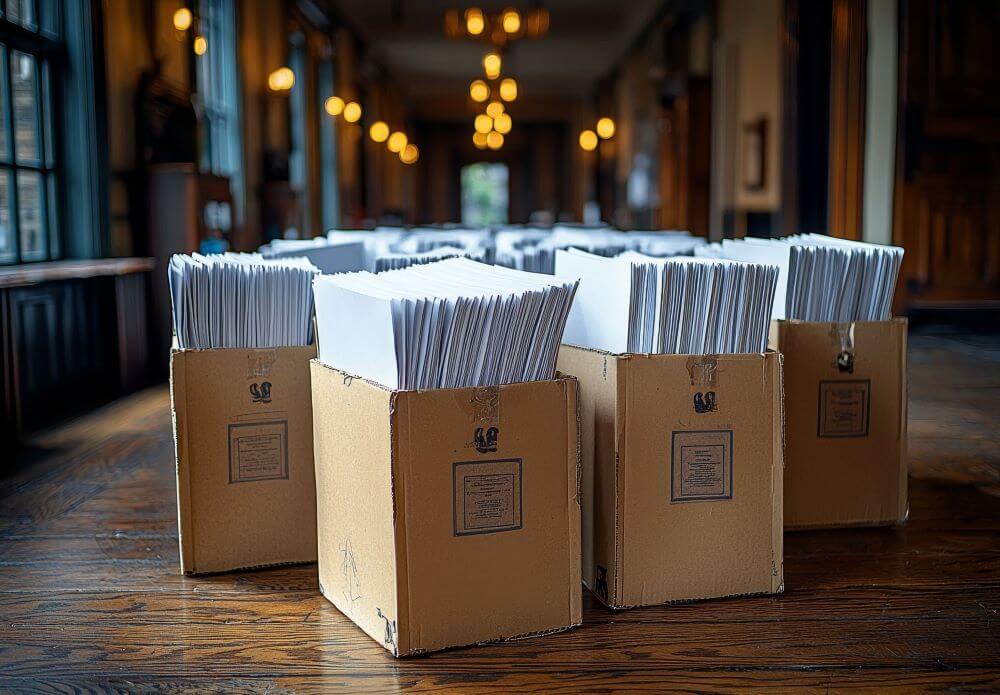Proper disposal of confidential waste is crucial for protecting sensitive information, maintaining regulatory compliance, and preventing data breaches. Whether dealing with financial records, medical files, or proprietary business documents, mishandling such materials can lead to severe legal and financial consequences. As such, organisations and individuals must follow best practices to ensure confidential waste is securely destroyed.
Below are five essential dos and don’ts for disposing of confidential waste securely:
Dos of Disposing Confidential Waste
Proper disposal of confidential waste is essential to prevent data breaches and comply with regulations. The following are the best practices to ensure sensitive information remains protected throughout the disposal process:
1. Use a Professional Shredding Service
One of the most secure ways to dispose of paper documents is by hiring a professional shredding company. These services use industrial-grade shredders that render documents irrecoverable. Many providers also offer certificates of destruction, ensuring compliance with data protection laws.
Furthermore, according to reputable websites like ucr.uk.com, failing to dispose of sensitive documents correctly can expose businesses to identity theft, fraud, and regulatory penalties. Therefore, working with a reliable shredding service provider would be a great way to dispose of confidential waste properly.
2. Implement a Clear Disposal Policy
A well-defined disposal policy is crucial for maintaining data security and regulatory compliance. Organisations must document procedures for identifying, segregating, and disposing of confidential waste, including paper documents, digital files, and electronic media. The policy should also specify authorised disposal methods, designate responsible personnel, and outline steps for verifying destruction.
Regular updates can ensure alignment with evolving data protection laws, minimise legal risks, and reinforce accountability across all departments.
3. Securely Store Waste Before Disposal
Confidential waste must be safeguarded at every stage, including temporary storage before destruction. Locked bins with restricted access can help prevent unauthorised retrieval of sensitive documents. For added security, organisations should use tamper-proof containers in designated secure areas.
Moreover, businesses handling highly classified information may require monitored storage or scheduled collections by certified disposal services to eliminate vulnerabilities during the interim period.
4. Destroy Digital Media Properly
Digital devices can retain data even after deletion, making proper destruction essential. Degaussing (magnetic erasure) or certified data-wiping service can securely erase information, but physical destruction (shredding or crushing) is the most foolproof method. Partnering with certified e-waste disposal vendors can ensure compliance with environmental and data protection regulations, preventing potential breaches from discarded hardware.
5. Train Employees on Best Practices
Human error is a leading cause of data breaches, making staff training indispensable. Regular workshops should cover proper handling, storage, and disposal protocols, emphasising the consequences of non-compliance. Real-world examples and periodic assessments can also reinforce awareness. Lastly, encouraging a culture of vigilance can ensure employees remain proactive in identifying and mitigating risks associated with confidential waste mismanagement.
Don’ts of Disposing Confidential Waste
Improper disposal of sensitive materials can expose organisations to data breaches and regulatory penalties. Avoiding some critical errors can ensure confidential information remains secure. Here are key practices to eliminate when handling sensitive waste disposal:
1. Don’t Throw Confidential Waste in Regular Trash
Discarding sensitive materials in general waste invites data breaches, as dumpster divers can easily retrieve intact documents. Even poorly shredded papers can be reassembled. Hence, organisations should always use locked disposal bins or professional destruction services to ensure complete security and prevent unauthorised access to confidential information.
2. Don’t Rely on Basic Office Shredders
Strip-cut shredders can leave documents vulnerable to reconstruction, exposing businesses to data theft risks. As such, it’s best for organisations to invest in cross-cut or micro-cut shredders that turn paper into confetti-like particles, making reconstruction virtually impossible. For maximum security, they should consider professional shredding services with on-site destruction capabilities.
3. Don’t Ignore Legal Requirements
Regulations like HIPAA (healthcare) and GDPR (EU data) mandate strict disposal protocols. Non-compliance can lead to severe penalties and reputational damage. Therefore, it’s essential for organisations to stay updated on industry-specific laws and implement compliant destruction methods, including certified documentation of disposal processes for legal protection.
4. Don’t Leave Waste Unattended During Disposal
Unsecured confidential waste, even briefly left in hallways or open bins, can risk theft or exposure. Organisations are advised to use locked containers with controlled access and schedule regular collections by authorised personnel. Implementing a chain-of-custody protocol is crucial to track waste until final destruction.
5. Don’t Forget to Audit Disposal Processes
Without regular audits, disposal gaps may go unnoticed, increasing breach risks. Organisations must conduct quarterly reviews of waste handling procedures, verify vendor compliance, and test employee adherence. Audits can ensure ongoing protection against evolving security threats and regulatory changes.
Conclusion
Proper disposal of confidential waste is a critical aspect of data security. By following these dos and don’ts, businesses and individuals can minimise risks and protect sensitive information from falling into the wrong hands. Consulting expert resources is highly recommended for further guidance on secure disposal methods.

















